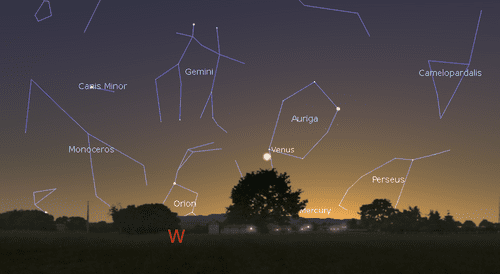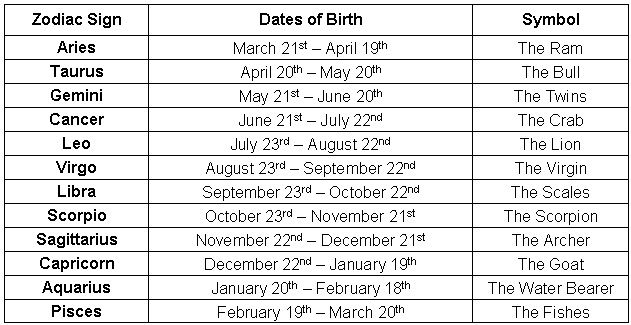
You might have seen a sample natal chart online or have had a professional astrologer create one for you and wondered.
How am I supposed to understand this?
In this article, we help you along your journey to understanding your natal chart by providing you with five basic concepts.
A natal or birth chart is a representation of the positions of the stars, in particular the Sun, Moon, and other planets in our solar system, at the exact time and location of your birth. An analysis of this chart can provide deep insight into your personality, your motivations, and your desires.
1. Natal Charts Are Presented Graphically

A natal chart is presented graphically in accordance with three major styles, two of which come from Vedic Astrology and the third from Western Astrology.
The Southern-Indian graph for Vedic Astrology uses a square within a square configuration, with the houses occupying the space between the inner and outer squares. Each of the houses is exactly the same size, indicating that all have equal importance. The houses are ordered clockwise, with the first house occupying the box above the inner square and to the left.

The Northern-Indian style for Vedic Astrology uses a diamond within a square configuration, with the first house occupying the top position of the diamond. In this case, the houses are ordered in a counter-clockwise direction. Some Vedic Astrologers prefer this graph because it easily reveals certain relationships within the natal chart.

The Western Astrology style graph is presented in a spoke and wheel configuration, with the first house appearing on the left below the equatorial line the separates the northern and southern hemispheres. The houses are ordered counter-clockwise.
2. Your Natal Chart Consists of 12 Sections
A natal chart is divided into twelve sections that are referred to as houses. Each house reflects a different aspect of your life: Houses one through six are concerned with everyday activities and mundane matters such as personal finances, the home, and daily routines; whereas houses seven through twelve are concerned with more abstract concepts such as philosophy, legacy, and spiritual matters. The placement of the planets in the houses reveals where we store our energy and also indicates our personal strengths and limitations.
3. Each House Contains One Unique Zodiac Sign

Each house is home to a particular zodiac sign. Aries always occupies the first house, followed by Taurus and the other signs until we reach Pisces at the twelfth house. The figure presents the zodiac signs in a Southern Indian style graph, but the order is the same for the Northern Indian and Western-style graphs as well.
The three graphical representations highlight a commonality between the Vedic and Western systems of Astrology. The graphs are organized differently but they present the same basic information. Music provides us with an apt analogy. There are only 12 available notes. However, they can be combined in unique ways to give us different styles, such as rock, blues, country, bluegrass, jazz, and many more.
While there are other points of similarity between the Vedic and Western systems, there also are major areas of difference, both in procedures and in focus. I don’t recommend trying to mix them.
4. Vedic and Western Systems of Astrology Have Different Points of Focus

What we have presented thus far is known as the natural zodiac. It acts as a baseline for understanding and analyzing a natal chart. However, this is not necessarily what your natal chart will look like for two primary reasons.
The first of these is that the point of focus for a natal chart in the Vedic system is your Ascendant sign. It represents the astrological sign (and degree of that sign) that is ascending on the eastern horizon at the specific time and location of your birth. On the other hand, the Western system uses your Sun sign as its point of focus. Sun signs are based upon a 12-month periodicity that starts with the spring equinox on March 21. Thus, if you were born sometime between March 21-April 19, your Sun sign is Aries. If it was April 20-May 20, your Sun sign is Taurus, and so on.

The second reason that your natal chart probably will not look the same as the graph for the natural zodiac relates to positioning. Because your Ascendant sign in the Vedic system represents the focal point of your natal chart, it now occupies the first house. For example, if your Ascendant sign is Virgo , then it will be the first house in your natal chart, Libra will be the second house, Scorpio
, then it will be the first house in your natal chart, Libra will be the second house, Scorpio the third, and so on. Of course, if your Ascendant or Sun sign is Aries, then your natal chart will resemble the graph for the natural zodiac.
the third, and so on. Of course, if your Ascendant or Sun sign is Aries, then your natal chart will resemble the graph for the natural zodiac.
The Southern and Northern Indian Vedic Styles Are Distinct

An important distinction between the Vedic Astrology graphs is that the Southern Indian style fixes the order of the zodiac signs and changes the houses once an Ascendant sign is identified, whereas the Northern Indian style does the opposite. For example, let’s return to the example in which a person’s ascendant sign is Virgo. In the Southern Indian graph, their natal chart would still show Virgo located in its usual position in the bottom right corner box. Within this box will be the letters “As” to denote that it is the ascendant sign. Virgo now is the first house and the other houses shift to accommodate this.

In the Northern Indian style graph, the order of the houses is fixed. Being the first house, Virgo would move to the top of the inner diamond and the other signs would shift accordingly. Again. It’s the same information that is presented differently.
5. Your Natal Chart Is a Two-Step Process
The graph showing the placement of the planets and their degrees is the first step in your natal chart.
But what does it all mean?
The answer to this is complex and constitutes the second step. Analyzing and interpreting your natal chart requires expertise, either that you gain through intense study on your own or through the services of a professional astrologer.
We offer this service at Astrología Aditi.
at Astrología Aditi.
Whether you choose to take advantage of our expertise or that of someone else, the analysis and interpretation step is very important and should not be underestimated.
Some people attempt to economize by having a friend that is an astrolophile do a chart for them. This is inadvisable. An astrolophile is a hobbyist and will not have the depth of experience that a professional astrologer has. Equally important, a friend will have a vested interest in preserving your friendship and will be more apt to downplay or hide things in your chart that might make you upset or uneasy and emphasize things that they think you will like. This is not what you need.
An incomplete or outright wrong natal chart evaluation potentially can produce disastrous results. We at Astrología Aditi recommend that you use a reputable professional astrologer.
Mistakes that People Make with Natal Charts
A major mistake that people make is that they take their natal chart personally. They don’t like some of the things that are in it, so they reject it entirely. This is unfortunate. It is rare that a natal chart doesn’t make a person uncomfortable in certain areas. In fact, you can be almost 100% sure that there will be things in your natal chart that you won’t like. But there is no hidden agenda behind a natal chart. It simply is what it is; nothing more and nothing less.
Each of us develops an image of ourselves as we travel on the path of this life. In some areas, your natal chart will confirm that image. In other areas, it is likely that it won’t. The purpose of your natal chart is to help you to grow, not to validate what you believe about yourself or tell you only what you want to hear. That would be dishonest.
If you are honest with yourself, your natal chart will cause you to look inward and this is a very good thing. It can lead to greater self-acceptance and spiritual growth.
Probably the biggest mistake that people make is that they treat their natal chart as an endpoint. In other words, they get their natal chart, look it over, and then put it in a drawer and forget about it. But your natal chart actually is a beginning, a launching point in which new things about yourself are revealed and acted on. It can be analyzed and used on many different levels. It can help you to grow, so by all means take advantage of it.
Acknowledgements
Headline photo by Kelly Lacy
Recent Content
The following is the story of the origin of Rahu, known in Western Astrology as the North Node of the Moon. Keep reading. There are several lessons to be learned in this...
A common form of forecasting in the modern world is that used by Meteorology. This science uses measurements, such as temperature, atmospheric pressure, humidity, and the behavior of the winds...
